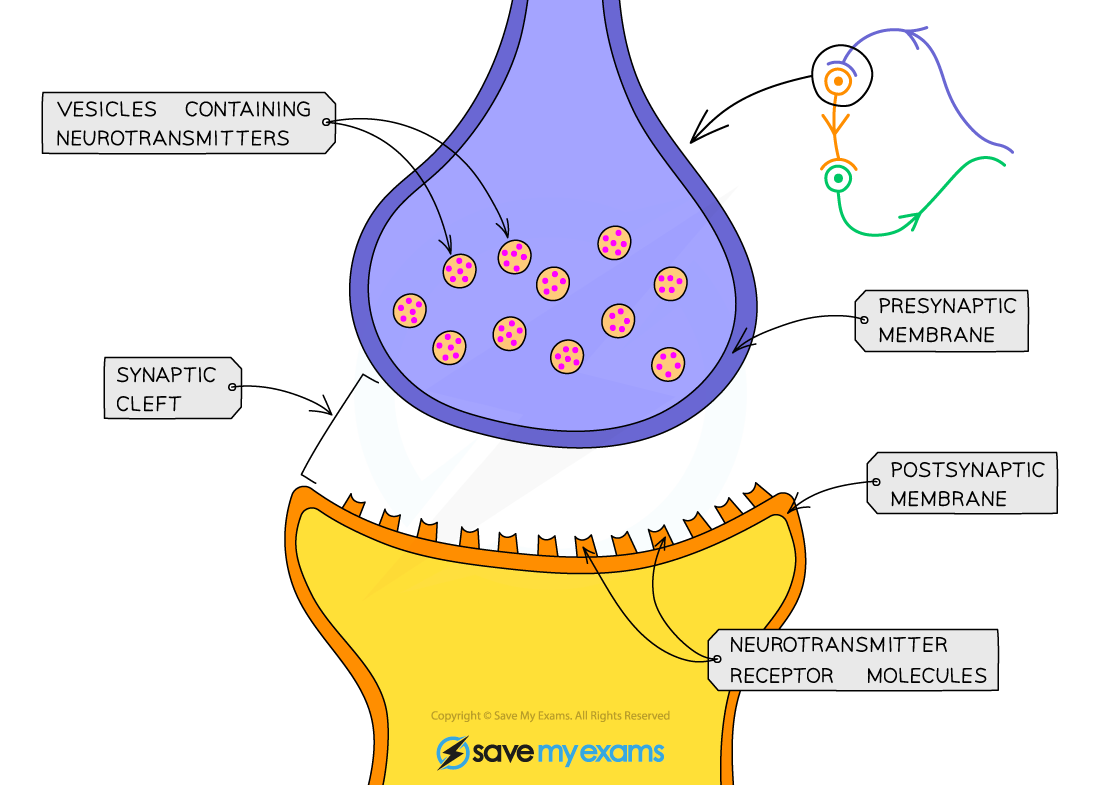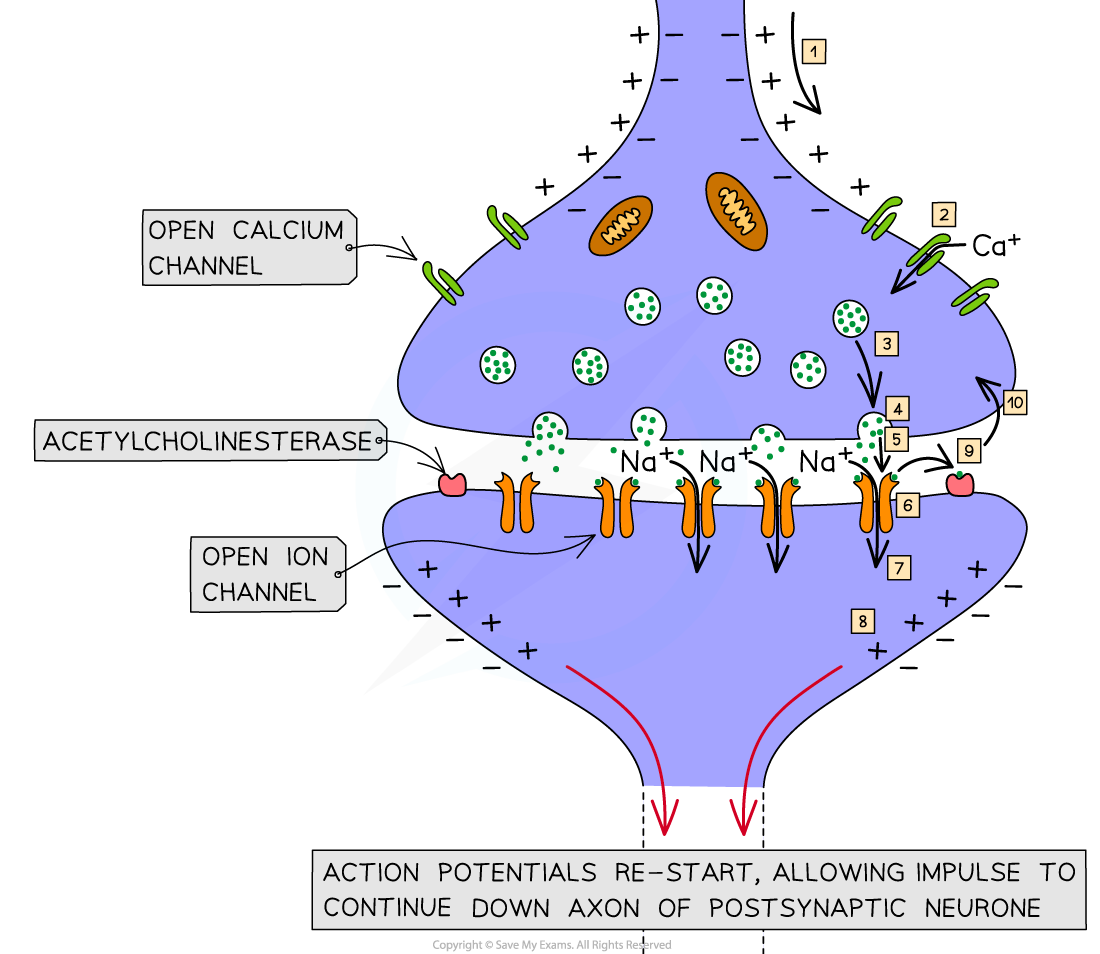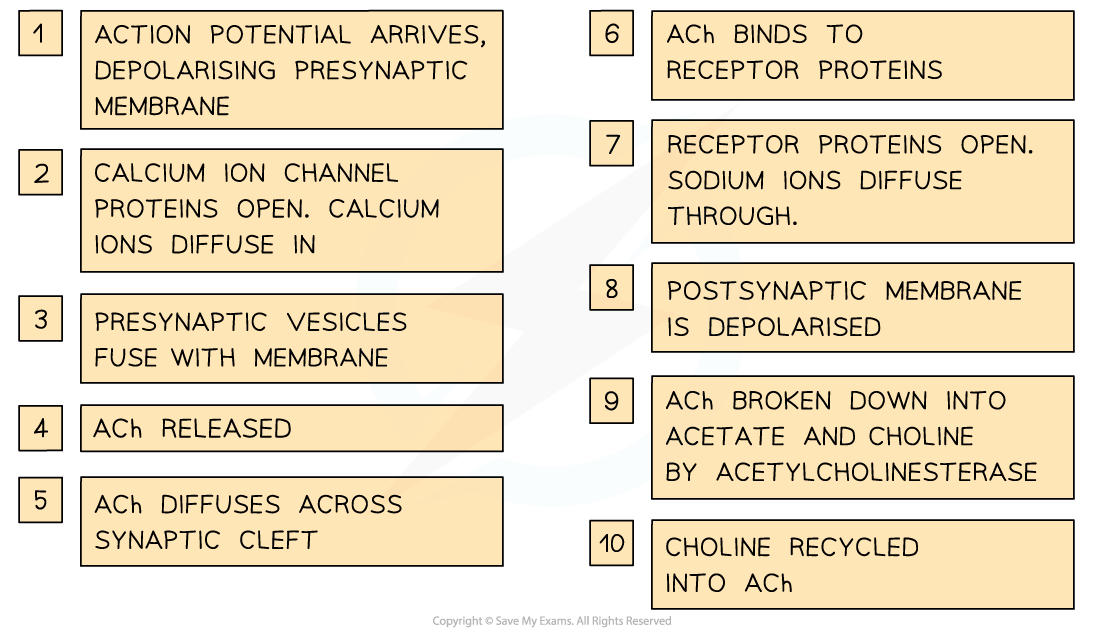- 翰林提供学术活动、国际课程、科研项目一站式留学背景提升服务!
- 400 888 0080
IB DP Biology: HL复习笔记6.5.3 Synapses
Synapses
- Where two neurones meet, they do not actually come into physical contact with each other
- Instead, a very small gap, known as the synaptic cleft, separates them
- The ends of the two neurones, along with the synaptic cleft, form a structure known as a synapse
- Synapses act as the junctions between any cells in the nervous system, e.g.
- In the sense organs, there are synapses between sensory receptor cells and sensory neurones
- In muscles, there are synapses between motor neurones and muscle fibres

A synapse
Synaptic transmission
- Electrical impulses cannot ‘jump’ across the synaptic cleft
- When an electrical impulse arrives at the end of the axon on the presynaptic neurone, the membrane of the presynaptic neurone becomes depolarised, triggering an influx of calcium ions into the presynaptic cell via calcium ion channels in the membrane
- The calcium ions cause vesicles in the presynaptic neurone to move towards the presynaptic membrane where they fuse with it and release chemical messengers called neurotransmitters into the synaptic cleft
- A common neurotransmitter is acetylcholine, or ACh
- The neurotransmitters diffuse across the synaptic cleft and bind with receptor molecules on the postsynaptic membrane; this causes associated sodium ion channels on the postsynaptic membrane to open, allowing sodium ions to diffuse into the postsynaptic cell
- If enough neurotransmitter molecules bind with receptors on the postsynaptic membrane then an action potential is generated, which then travels down the axon of the postsynaptic neurone
- The neurotransmitters are then broken down to prevent continued stimulation of the postsynaptic neurone
- The enzyme that breaks down acetylcholine is acetylcholinesterase


Synaptic transmission using the neurotransmitter acetylcholine
Unidirectionality
- Synapses ensure the one-way transmission of impulses
- Impulses can only pass in one direction at synapses because neurotransmitter is released on one side and its receptors are on the other – chemical transmission cannot occur in the opposite direction
- This prevents impulses from travelling the wrong way
Acetylcholine
- There are over 40 different known neurotransmitters
- Examples include dopamine and noradrenaline
- One of the key neurotransmitters used throughout the nervous system is acetylcholine (ACh)
- ACh is produced in the presynaptic neurone by combing choline with an acetyl group
- Synapses that use the neurotransmitter ACh are known as cholinergic synapses
- Acetylcholine is released into the synaptic cleft when ACh-containing vesicles fuse with the presynaptic membrane, releasing ACh molecules into the synaptic cleft
- ACh binds to specific receptors on the postsynaptic membrane, where it can generate an action potential in the postsynaptic cell by opening associated sodium ion channels
- To prevent the sodium ion channels staying permanently open and to stop permanent depolarisation of the postsynaptic membrane, the ACh molecules are broken down and recycled
- The enzyme acetylcholinesterase catalyses the hydrolysis of ACh molecules into acetate and choline
- The products of hydrolysis are then absorbed back into the presynaptic neurone, and the active neurotransmitter ACh is reformed
Inhibition of Acetylcholine Receptors
- Neonicotinoids are synthetic compounds similar to nicotine that are commonly found in pesticides
- Neonicotinoids can block synaptic transmission at cholinergic synapses in insects by binding to acetylcholine receptors
- This binding is irreversible, as acetylcholinesterase cannot break down neonicotinoids
- As the acetylcholine receptors are blocked, acetylcholine is unable to bind, which stops impulses from being transmitted across synapses
- This leads to paralysis and death in insects
- Neonicotinoids are considered to be especially suitable as pesticides because they're not toxic to humans and other mammals
- A much larger proportion of synapses in insects are cholinergic compared to mammals
- Neonicotinoids bind much more strongly to acetylcholine receptors in insects
- There is a great deal of controversy over the use of neonicotinoid pesticides because of the impact that they are thought to have on essential pollinators such as bees
转载自savemyexams

最新发布
© 2025. All Rights Reserved. 沪ICP备2023009024号-1









